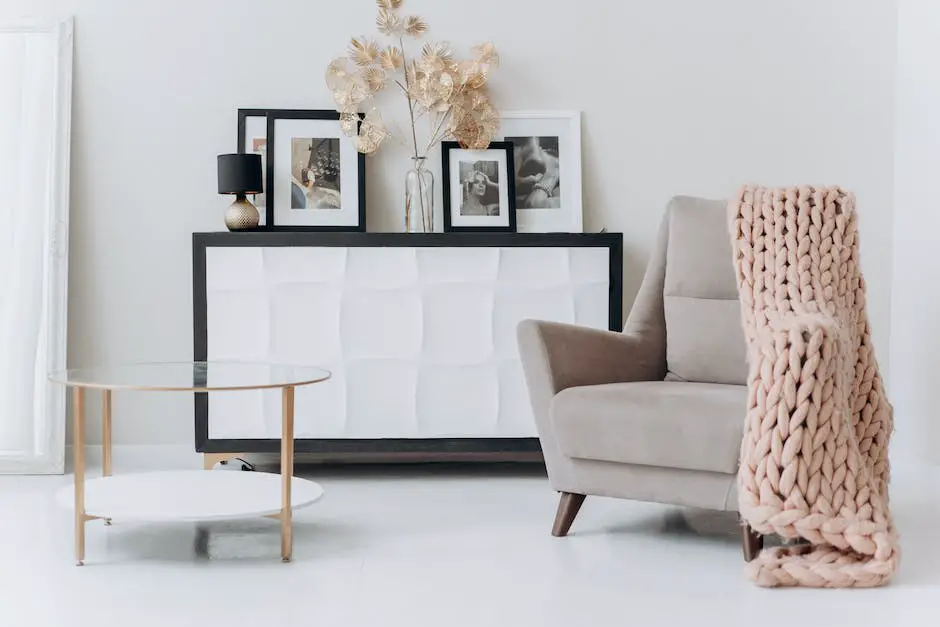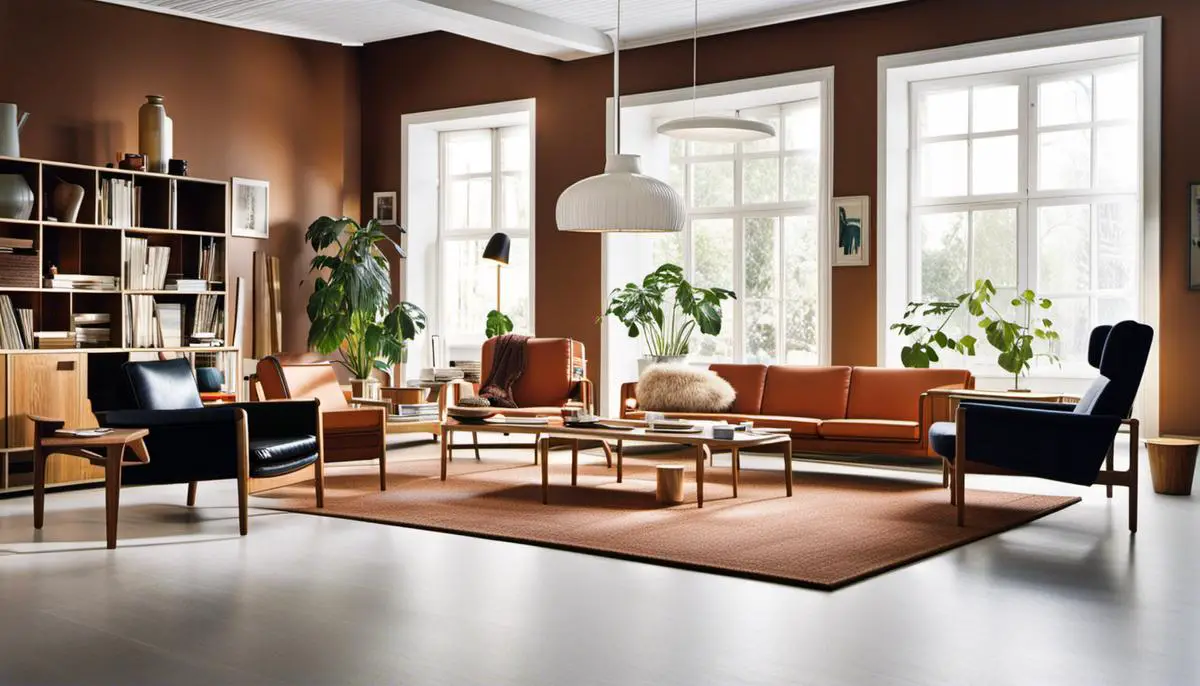Since its humble beginnings in the deep woods of southern Sweden, IKEA has come a long way, establishing a whopping presence in the global furniture market. Known for its simplicity, functionality, and cost-effectiveness, IKEA has entirely transformed the way we purchase and assemble furniture. This journey, however, is not as straightforward as it looks like. The evolution of IKEA’s furniture designs over the decades has wandered through changing global trends, customer demands, and technological advancements. Beginning with a dive into the philosophy that built the foundations of IKEA to a hopeful skim across the future trends in its design realm, this insight aims to journey through the intriguing narrative that IKEA’s furniture design deceptively hides in its simplicity.
Origins and Early Designs of IKEA Furniture
Origins of IKEA and its Early Principles
IKEA, the popular Swedish home furnishing company, was established by Ingvar Kamprad, in 1943. Originally focused on selling everything from pens and wallets to picture frames and table runners, IKEA branched into furniture production in 1948. From the outset, Kamprad implemented a simplistic and functional design philosophy, reflective of the minimalist Scandinavian aesthetic popular in the region. This approach embodied the virtues of cost-effectivity, functionality, and sustainability.
The Scandinavian Aesthetic and IKEA
Scandinavian design values functionality, simplicity, and the minimization of waste, striving to meld aesthetics with purpose. Renowned for integrating these attributes into its furniture designs, IKEA democratized good design by making it accessible to the average consumer. The company’s products were designed to be easily assembled and disassembled, resulting in a flat-pack design.
The Advent of Flat-pack Design
The flat-pack design concept was born in the early 1950s when an IKEA employee had the innovative idea of removing the legs from a table to fit it into a car for transport. This simple, yet groundbreaking idea marked the inception of an industry-transforming methodology. The flat-pack design allowed for more space-efficient shipping, reducing overall costs and making products more affordable for consumers. This approach stimulated a revolution, shaping the future course of IKEA.
IKEA Designs in the 1960s
IKEA began expanding globally during the 1960s, opening stores in various locations outside of Sweden. During this period, IKEA’s furniture design retained its classic Scandinavian minimalist aesthetic while incorporating functionality to cater to the evolving needs of global consumers. The application of these principles resulted in clean lines and practical furniture pieces that promoted comfort and affordability.
Transitional Designs in the 1980s and 1990s
The 1980s and 1990s saw a shift in IKEA designs, with a more playful introduction of colors, patterns, and style variations. With the worldwide convenience of flat-pack, IKEA began to consider regional preferences and adopted a multicultural approach to its furniture designs. However, its core principles remained firm, even as it experimented with bolder concepts, reflecting culture-specific trends in its designs.
IKEA Furniture Designs in the 21st Century
In the new millennium, IKEA designs have continued to evolve, driven by technological advancements and an increasing focus on sustainability. This period has seen the incorporation of smart home technology in furniture designs. Series like ENEBY, SYMFONISK, and TRÅDFRI are examples of this move towards smart home solutions. Simultaneously, the eco-friendly “circular IKEA” initiative encourages sustainability through furniture recycling, contributing to the global push towards environmental conservation.
When we look at the trajectory of IKEA’s furniture designs, it’s evident that they have significantly evolved over the years. Initially, the brand exclusively championed a minimalist Scandinavian aesthetic. However, with time, IKEA adopted a multicultural perspective, which played a key role in shaping its modern, progressive, and technologically advanced designs. Above all else, IKEA consistently prioritized sustainable practices while ensuring the affordability and accessibility of its pieces, aligning with the core principles set by its founder, Ingvar Kamprad.

The Shift in IKEA Furniture Design: 1970s – 1990s
Influence and Evolution: IKEA’s 1970’s Furniture Designs
In the 1970s, IKEA began to make its mark, creating affordable and stylish homewares that attracted a large customer base. The furniture designs from this decade were playful, innovative, and very much in tune with global trends. Bold colors and patterns were key elements, with a nod towards pop art and op art influences. Furniture pieces from the period, predominantly crafted from wood, exhibited organic and curved lines, while the use of plastics showcased IKEA’s commitment to affordability and accessibility. An iconic product from the era, the Klippan sofa introduced in 1979, epitomized this trend, combining a simple design with a selection of removable, washable covers – a notable innovation in the furniture industry at the time.
IKEA: 1980’s Scandinavian design domination
As the 1980s rolled in, IKEA’s designs began to lean more towards minimalism, reflecting the Scandinavian roots of the company. The focus shifted towards ergonomic function and practicality in design. Faux-wooden finishes and chipboard were preferred materials due to their cost-effectiveness, with metal tubing also extensively used, exemplified in items like the popular LACK series. Another significant release was the iconic BILLY bookcase in 1979, which came to fore in the 80s, whose simplicity and functionality – it could be extended up or outwards based on customer requirements – ensured its wide acceptance and evergreen status.
IKEA: 1990’s Eco-friendly and clean line aesthetics
Moving into the 1990s, IKEA responded to growing global environmental concerns by incorporating sustainability into their designs. They demonstrated this commitment by using more eco-friendly materials like bamboo and introducing lines that were designed to be durable and have a long lifespan. IKEA’s design aesthetics during the 90s put an increased emphasis on clean lines, neutral colors, and modern simplicity. An example of this shift can be seen in the introduction of the ubiquitous MALM series in 1995, that highlighted functional, simple design at affordable prices.
In summary, the evolution of IKEA’s furniture designs across the past three decades unfolds a tale of their steadfast dedication to delivering affordable, premium quality furniture. These designs were not merely the creations of their artistic minds, but they evolved organically with the course of socio-cultural progression and technology advancements. Keeping a keen eye on global trends, catering to customer preferences, and acknowledging the dire need for sustainability, IKEA managed to carve their unique niche, securing their reputation as a giant in the home furnishings industry.

IKEA in the New Millennium: 2000s – Present
The Dawn of the 21st Century: Aesthetics in Simplicity and Functionality
Witnessing the early 2000s, IKEA seamlessly maintained its signature style of functional and simple design, always upholding the virtue of affordability. Channeling the essence of Scandinavian minimalism, IKEA designers crafted furniture which was stripped down to its bare beauty. This era of IKEA furniture bore the marks of this influence with its monotone finishes, pristine lines, and long-lasting quality. Moreover, recognizing the era’s growing trend of compact living spaces, IKEA produced designs for space optimization. In came an array of stackable items, modular furniture, and versatile pieces that doubled in function.
Mid-2000s: Contemporary Collaboration
In the mid-2000s, IKEA launched an emphasis on collaboration with other artists and designers, leading to more diversified styles and innovative ideas. One important collaboration was with British designer Ilse Crawford, resulting in the SINNERLIG collection. SINNERLIG included cork-covered furniture and woven baskets, showing a shift toward natural materials and tactile experiences.
Late 2000s: Sustainability Focus
The latter part of the decade saw IKEA’s focus shift towards sustainability. In 2008, IKEA introduced the PS collection, a range of furniture designed to be environmentally friendly, affordable, and easily transportable. The collection featured products created from renewable, recycled, or recyclable materials like bamboo and plastic.
2010s: Technological Adaptation
With the proliferation of technology in daily life, IKEA had to adapt to changes in consumer lifestyle. This led to the introduction of furniture like the SVALLET work lamp, which consumed up to 85% less energy, and the RIGGAD wireless charging lamp that incorporated technology into its designs.
Collaboration with Fashion Designers
In the mid to late 2010s, IKEA started large-scale collaborations with fashion designers, such as Virgil Abloh, the American fashion designer and creative director of Louis Vuitton’s men’s wear. The resulting MARKERAD collection consisted of statement pieces that combined functionality, contemporary art, and street culture.
New Decade, New Challenges
The past few years have seen IKEA dealing with the impact of the COVID-19 pandemic on their production and sales. Despite these challenges, they’ve continued to prioritize sustainability, with pledges to become climate positive and restructure their business to promote circularity. For instance, they’ve committed to making all products from renewable or recycled materials by 2030. They’ve also piloted furniture leasing and buy-back schemes in certain countries.
Looking Towards the Future: IKEA’s Current Trends
IKEA’s furniture design today, and in the years to come, is significantly influenced by the increasing demand for home office furniture, the need for design solutions suitable for smaller living spaces, and the pressing requirement for home organization. This is reflected in their ongoing and upcoming product lines. The transformation IKEA’s furniture designs have undergone over the past two decades illustrates their commitment to meeting shifting societal needs and consumer preferences, with a keen emphasis on achieving their sustainability objectives.

Photo by jamieattfield on Unsplash
Future Trends and Projections in IKEA’s Furniture Design
Integrating Sustainability Into IKEA’s Furniture Design
Over recent years, IKEA’s dedication to incorporating sustainability in their designs has grown significantly, a trend poised to fortify in the future. As a part of their 2020 announced Sustainability Strategy, IKEA has pledged to create a positive impact on people and the planet by 2030. Their goals encompass reducing greenhouse gas emissions beyond what the IKEA value chain produces, sourcing from sustainable resources, and utilizing only renewable energy. With IKEA’s proactive efforts to lessen its environmental footprint, anticipate seeing an increased production of furniture crafted from renewable substances like bamboo, and recycled materials such as plastic and aluminum.
Modularity in IKEA’s Future Design Concepts
As the need for adaptable and flexible living spaces increases with changing lifestyle, real estate dynamics and the trend towards smaller homes, the concept of modularity is expected to take center stage in IKEA’s future furniture designs. The company has already debuted several modular furniture lines that allow for customization according to individual needs and spatial constraints. This design principle not only allows users to personalize their space but also cuts down on waste, as individual components can be replaced without having to discard the entire piece.
User-Friendly Assembly and “Flat Pack” Design
IKEA’s “flat pack” furniture, that can be assembled and disassembled by the user, has been one of the key characteristics of the brand’s design philosophy. This, combined with the use of pictorial assembly instructions, has been instrumental in IKEA’s global success. Looking ahead, the company is expected to continue perfecting this approach with designs that are even easier to assemble, thus enhancing customer experience. These efforts align with IKEA’s commitment to simplicity and functionality.
Tech Integration and Furniture Automation
With advancements in technology and increasing consumer demand for smart homes, a greater level of technology integration in IKEA furniture designs can be anticipated. The company has already taken steps in this direction with products like smart light bulbs, wireless charging furniture, and automated window blinds in its catalog. In the future, IKEA’s furniture designs might include innovative features such as integrated speakers, sensor-activated lighting, and charging stations, along with offerings designed to accommodate the technological devices commonly used by consumers today.
Aesthetics and Cultural Infusion
Though IKEA’s aesthetic might be most readily associated with minimalist Scandinavian design, the company has shown a willingness to look beyond its traditional design roots. Recent IKEA collections have drawn from various cultural traditions, incorporating unique design elements from countries as diverse as India and Japan. This trend is likely to continue and diversify as IKEA seeks to cater to the growing global market and design-savvy customers seeking to infuse their homes with a unique character.
In the coming decades, IKEA furniture design is expected to further evolve, with a stronger emphasis on sustainability, functionality, and diversity. New materials and technologies will be incorporated, and designs will reflect the changing needs and preferences of users worldwide. This makes it a fascinating domain to watch, as the company continues to innovate and influence worldwide furniture design trends.

As IKEA continues its journey, the narrative remains, standing the test of time and evolution. Its dedication to craft, ethos of affordability and functionality, and commitment to sustainable practices remain non-negotiable despite the changing trends and demands. In its unwavering crusade, IKEA continues to redefine ‘home’ for millions around the world and influence design lexicons universally. As it ventures deeper into the future, the brand is poised to continue to awe us in disguise of its simplicity, promising a vibrant array of designs that not only make us part of the creative process but also keep us responsible for a sustainable future. Only time will unravel the marvel that IKEA has always been in both the realms of design and customer experience.


